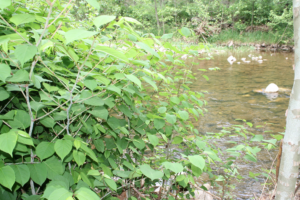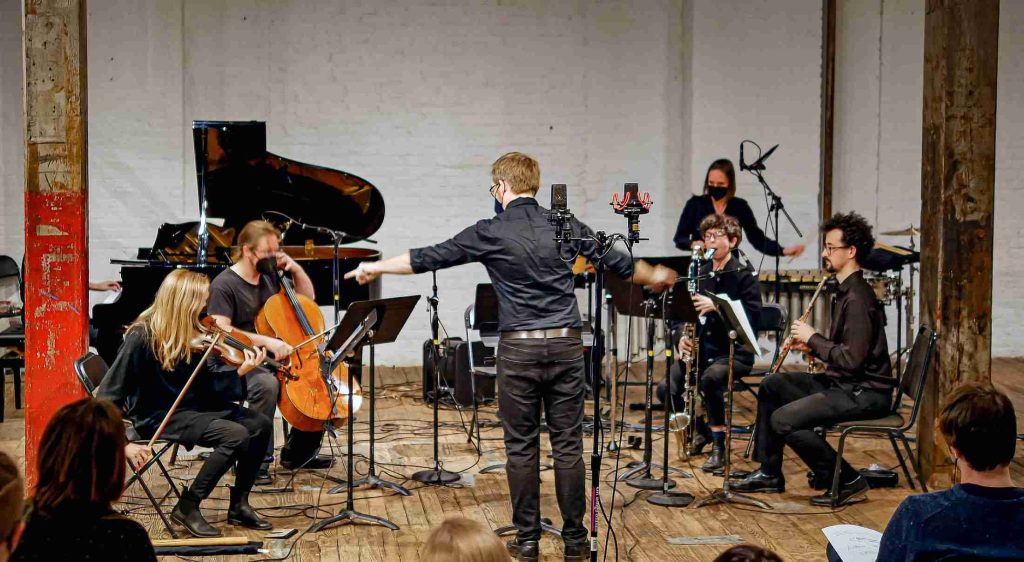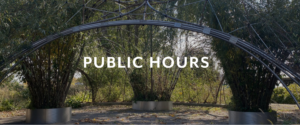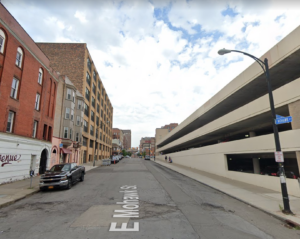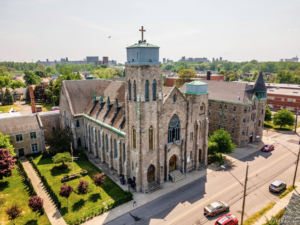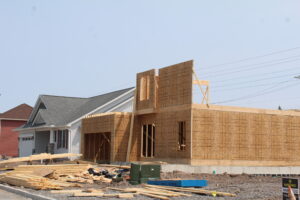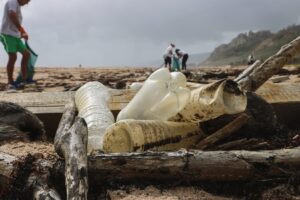“Fool Us Once, Shame On You; Fool Us Twice, Shame On Us.”
(This is Part I of a Three Part Article)
Since the very first shovel hit the ground, the Kensington Expressway has been the center of controversy – controversy for its destruction of the city’s urban fabric – controversy for its disruption of neighborhood life – controversy for its concentration of noise and toxic pollutants into a narrow channel – controversy for draining the lifeblood from some of the city’s most important business arterials – and finally, controversy for its savage obliteration of Olmsted’s grandest parkway.
Nevertheless, in spite of all this, Secretary of Transportation, Pete Buttigieg, recently joined a cohort of New York politicians at the Buffalo Museum of Science to add federal dollars to the state’s billion+ dollars of new investment into what is largely regarded as one of the city’s great historic blunders. Amidst requisite photos and backslapping, politicians painted a glowing future for the bloated 6-lane tunnel/cap scheme being proposed by the New York State Department of Transportation (NYSDOT). A scheme presented as the only “viable” course of action for Buffalo’s transportation future. To those with any knowledge of Buffalo’s past, that sales pitch should sound frighteningly familiar. It was, in fact, the very same sales pitch used to cajole us into construction of the calamitous cement ditch we deal with today.
Having met with substantial resistance to its Scajaquada Expressway (198) machinations from a more affluent West Side, NYSDOT has turned its attention to the Kensington Expressway (33) and what it, no doubt, hopes to be a more vulnerable, and hence gullible, East Side. Here it hopes to wear down community residents into acceptance of its tunnel/cap “ultimatum” as the best that can be hoped for. This, even though it is obvious that surrender to such a Hobson’s Choice will insure the presence of the Kensington Expressway for another 50 years. In addition, it is a “solution” that will vanquish any future possibilities for the authentic reestablishment of Olmsted’s historic Humboldt Parkway with its elegant grove of shade trees; the trees that NYSDOT so boorishly ripped out to make way for the ruinous misadventure that is now widely regarded as a prime example of discredited mid-twentieth century planning.
For every complex and difficult problem, there is an answer that is simple, easy, and wrong.
H.L. Mencken
Most unfortunately, unlike its halted West Side foray, NYSDOT opens its East Side assault with the support of a very influential and politically powerful ally.
It is difficult to talk of the Restore Our Community Coalition (ROCC) without first granting the organization the copious praise and gratitude it has most deservedly earned from the entire city of Buffalo. Since its founding in 2007, ROCC has worked with tireless patience and admirable persistence to successfully keep the Humboldt Parkway issue before the public eye. Over that stretch it has also succeeded in gaining impressive political support. And, in the person of current chairperson, Stephanie Barber-Geter, it would seem to be blessed with quite personable and capable leadership.
All of that said, however, in its unyielding support for NYSDOT’s “quick-fix” Band-Aid hustle, ROCC is dead wrong. We cannot allow the past good deeds of an organization like ROCC to lead us into another regrettable decision; a decision that will permanently saddle us with one of our great mistakes of the twentieth century and severely limit our options in the twenty-first.
ROCC leadership has decided to use its considerable accumulated political power and influence to push the readily available “solution” NYSDOT is trying to sell. Ideally, we should assume this decision by ROCC leadership accurately reflects the outcome that a substantial majority of tunnel area residents truly regard and accept as the most desirable. It shouldn’t go without notice, however, that an October 15, 2022 Buffalo News article did feature quite varied opinion among the area residents interviewed on the matter1.
Still,If ROCC leadership is truly expressing what they believe to be an overwhelming majority viewpoint they would deserve admiration for acting in the best interests of the people they claim to speak for. This would be the case were it not for the fact that NYSDOT’s tunnel “solution” will have dire consequences for all the other communities bordering the 33 as well as for the City of Buffalo as a whole. What is posited as justice for some only comes at the price of great injustice to many more.
NYSDOT openly admits the number one objective of its tunnel/cap proposal is maintenance of the current expressway traffic flow exactly as it is. After the gargantuan taxpayer expense this undertaking will entail, you can be assured any future talk of ripping it all out for expressway removal will be off the table for decades.
Fruitbelt Destruction (Chris Hawley – Facebook)
The Fruitbelt Neighborhood and all those other communities bordering the 33 from Sydney Street to the Bailey Avenue border had better get used to living with the scourge of this noxious thoroughfare. If this collaborative effort between NYSDOT and ROCC succeeds, the expressway won’t be going anywhere for generations to come.
As for those Humboldt Parkway residents unfortunate enough to be situated outside the area to be covered, project promoters hope to appease any sense of injustice by blathering on about a soon-to-follow “Phase II.” Theoretically, this would extend the tunnel to link with a properly restored, surface-level, Humboldt Parkway west of Delevan Avenue. Such correct restoration west of Delevan is the current preferred choice of the Greater Buffalo/Niagara Regional Transportation Council (GBNRTC) in its vision for the future of the 198.
What Assembly Majority Leader Crystal Peoples-Stokes and other promoters neglect to detail in their “Phase II” palliation is the fact that the Scajaquada Creek lies directly below the expressway surface at Northland Avenue. The presence of the creek in fact, is exactly why the current project ends where it does. It was recognized that dealing with the issue of the creek would have presented a vastly more complex engineering challenge; one that would have spiked costs to a prohibitive level. According to a Buffalo News Editorial, engineers with the Department of Transportation warned that the excavation required for such an extension would have caused “utility conflicts and environmental challenges, including possible flooding from the Scajaquada Creek drain2.” Elsewhere the News reported that NYSDOT officials maintained that such an extension could have raised the cost by “billions” and required years of additional studies3.
All of this without even considering the matter of the labyrinthine Delevan Avenue Interchange and problems presented there.
As one would expect, it an obvious top priority of NYSDOT to keep the tunnel air clean and safe for automobiles at all times. To such an end, NYSDOT intends to install multimillion dollar mechanical equipment to remove poisonous air from inside the tunnel. As for residents living above the tunnel, they are left to rely upon assurances from politicians and NYSDOT executives that such equipment can be adjusted to protect them as well. They will have to trust that the equipment can effectively and consistently filter any concentrated expressway poisons from leaking to the surface above. However, there have been comments made that would seem to indicate that this filtration project is somewhat experimental in nature. Sanjyot Vaidya, a design engineer from NYSDOT’s Western New York office, stated to the Buffalo News that “purifying the air has never been done before in a project like this.4” In 2019, even ROCC Chairperson, Stephanie Barber-Geter, remarked to the Buffalo News that cleansing exhaust fumes is not really something any city has yet figured out. “So we really have to create something,” she said.5
Photo courtesy of Christopher Hyzy
Accomplishing that will come at no little cost. To begin with demolition of present-day houses (quantity and location unspecified), along with the consequent relocation of residents, will be required. Construction of large facilities to house treatment equipment will follow. The design of such facilities is to be determined. These facilities will require access by truck for regular removal of treated refuse. In addition, five filtration structures, each sixteen feet in height, will be located down the center of the proposed lawn. In one proposal fourteen “air-intake” grates, measuring twenty-by-five feet each, would be placed in verges along the sidewalks. What, if any, air filtration would be provided for tunnel air which would logically seem to escape from such grates was not mentioned.
And what does all this represent for taxpayers? The annual maintenance charges for this mechanized hodgepodge are estimated at 12 million dollars.
Meanwhile, the present day highway, with its entire present traffic load will continue – business as usual – at both ends of the 4500 foot tunnel. Any notion that the poisonous air emanating from this highway will not continue to drift over the “protected” neighborhoods is pure fantasy.
Finally, Assembly Majority Leader Crystal Peoples-Stokes likes to trumpet revived commercial districts (i.e., Jefferson Avenue, Filmore Avenue) as a result of this tunnel/cap project. The extent of that revival has to be questioned due to the fact that the continued presence of the highway through the tunnel will allow the same cars to bypass the same commercial districts that the expressway was blamed for helping to vacate in the first place; as a ROCC Fact Sheet puts it: “Thriving commercial corridors (Jefferson and Filmore Avenues) and respective businesses succumbed as their regular traffic and customers were rerouted onto the Route 33 Kensington Expressway, completely bypassing them.” That situation will not be changed.
It is possible to save the future, by rescuing the past.
Aside from these logistical contentions, this billion+ dollar structure will end forever any possibility for the rightful return of a stolen historic treasure. Olmsted’s Humboldt Parkway was a resplendent three mile corridor that once provided for a glorious uninterrupted walk among magnificent shade trees; trees which presented themselves in a constantly changing drama of seasonal display.
That elegant walk not only provided for an uplifting physical connection between Delaware Park and MLK Park but served as an important symbol of unification between the West Side and East Side of a great city.
Olmsted and his Plan for Buffalo (Buffalo & Erie County)
Frederick Law Olmsted is among the greatest, if not the greatest, of American landscape architects. What particularly distinguished his Buffalo opus among the many achievements of his prolific career were not the individual parks he designed but the connection of those parks into a continuous park system.
To accomplish this, Olmsted applied the first widespread use of his new concept of the “parkway.” These essentially functioned as linear parks which allowed all citizens to enjoy a continuous park experience both on their journey to the parks and while traveling from one park to another. While the West Side’s Chapin, Bidwell and Lincoln Parkways have been meticulously preserved, the greatest of his parkways, Humboldt Parkway, was horrifically ripped out to make way for the Kensington Expressway.
The reckless desecration of Humboldt Parkway for the construction of the present day “car sewer” is to our collective shame. It is the shared responsibility of our ongoing stewardship to see that what we allowed to be so profanely destroyed is authentically restored to Olmsted’s original grand design. ROCC’s “afterthought substitution” of a 4500 foot lawn with some plantings and “dinkified” trees interrupted regularly by large ventilation towers is far from that. It is, in fact, a banal accommodation to the continued presence of the expressway and an insult to the Olmstedian grandeur it feigns to “resemble.” The West Side would never tolerate such a denigratory replacement for the sublime shade tree corridors of Chapin, Bidwell and Lincoln Parkways. The East side deserves nothing less.
Buffalo’s
Humboldt Pkwy – Before/After | Image courtesy Stephanie Crockatt @ BOPC
Earliest concept drawings, in some cases dating back more than a decade, proffered a highway cap as a possible means for the restoration of Olmsted’s Majestic Humboldt Parkway; thenceforward, ROCC leadership has remained affixed to that concept. However, dramatic developments in the years since that time have served to undermine such a vision.
Early Concept Drawing Proven Unworkable (C&S Companies Historic Humboldt Parkway Reconstruction Concept Study)
First, it is now widely acknowledged that the shallow soil necessitated by a tunnel structure would not allow for the planting of the large shade trees that are signature to Olmsted’s parkways. Secondly, a significant inner-city highway removal movement has come into being and spread across the globe.
The current bloated tunnel proposal, being peddled by NYSDOT and ROCC, will permanently deny the citizens of Buffalo from ever again seeing the Olmsted masterwork of which they have been so long deprived. With this in mind, the constant bandying about of phrases like “restoration of Humboldt Parkway” by politicians and cap proponents along with prominent display of historic photos of the original parkway at press conferences, meetings and in promotional literature must stop. It is deceptive almost to the point of deliberate falsehood. To put it in the words of the Executive Director of the Buffalo Olmsted Parks Conservancy (BOPC), Stephanie Crockatt6: “If they are not really bringing back Humboldt, then let’s not talk about it that way.”7
This is the end of Part I of this article. Part II will look at some of the controversial methods that have been adopted to foist this costly scheme upon a largely oppositional public. In addition, questions will be posed as to a proper role for the Buffalo Olmsted Parks Conservancy in all of this. Part III will focus on where we go from here. Consideration will be given to some alternate approaches and actions that, hopefully, could result in a more just, and less wasteful, solution for all.
For further reference – previous articles by Edward Marriott
Great Streets make for Great Cities
Great Streets Make For Great Cities II – Humboldt Parkway
Footnotes:
1. Mark Sommer, “ ‘They cannot replace what’s gone’: Route 33 residents split over restoration plan,” Buffalo News, October 15, 2022.
2. The Editorial Board: Kensington plan should move ahead while funds and support are available, Buffalo News, December 14, 2022.
3. Mark Sommer, “Concept of Kensington tunnel with green space on above-ground deck advances,” Buffalo News, December 20, 2022.
4. Mark Sommer, “East Side office opens for Kensington project: Public feedback ‘crucial to its success’,” Buffalo News, November 10, 2022.
5. Rod Watson, “The quest for ‘everything’ endangers Kensington Expressway tunnel plan, Buffalo News, December 11, 2019.
6. Stephanie Crockatt stepped down as Executive Director on May 18, 2023. Chief Financial Officer, Beth Downing, will be stepping into the role as Interim Executive Director while a search for a new Executive Director is being conducted. All quotes appearing in this article attributed to Stephanie Crockatt appeared in the Buffalo News prior to her departure.
7. Mark Sommer, “Kensington Expressway project comes into focus, but some say ‘generational’ plan falls short,” Buffalo News, July 26, 2022.
The post <strong>Our Way – <em>AND – </em>The Highway</strong> appeared first on Buffalo Rising.


